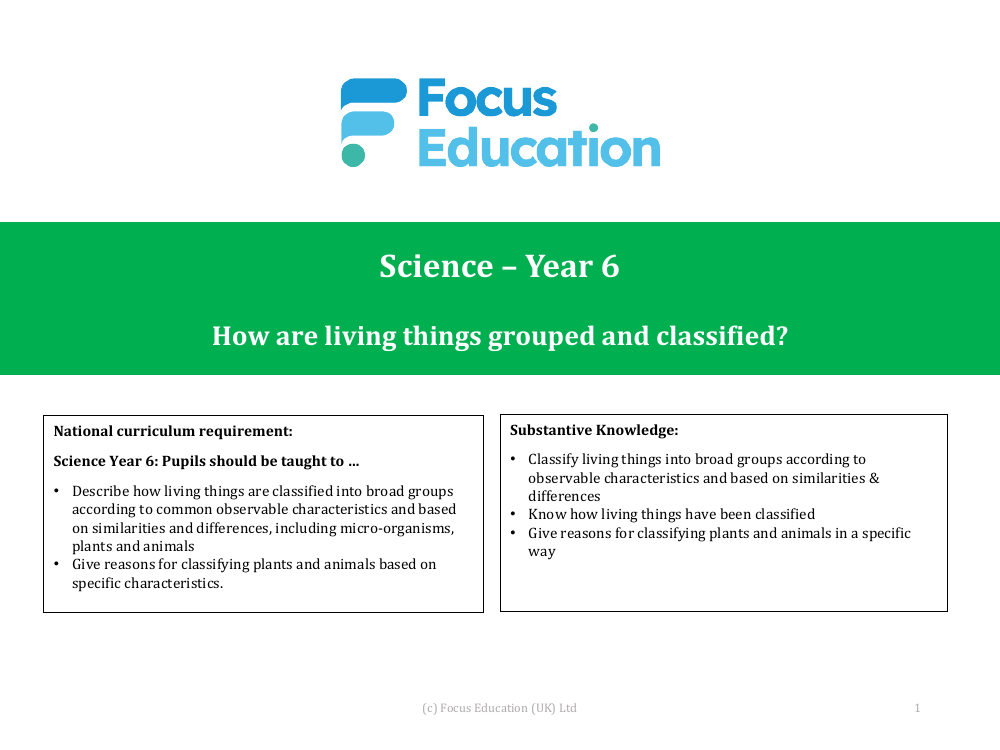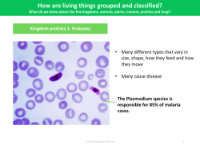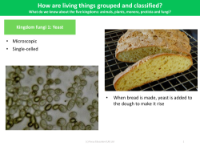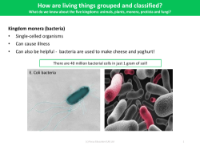What do we know about the five kingdoms: animals, plants, Monera, Protista and fungi? - Presentation

Science Resource Description
The curriculum for Science Year 6 includes a comprehensive exploration of the classification of living things into the five kingdoms: animals, plants, Monera, Protista, and fungi. Students are encouraged to delve into the unique characteristics that define each kingdom and understand the reasons behind the grouping of species. For instance, vertebrates are distinguished by their backbones, while invertebrates, which make up a significant portion of creatures, lack this feature. The classification system extends to microscopic organisms, such as bacteria in the Monera kingdom, which can be both beneficial and harmful. The Protista kingdom is a diverse group that includes protozoa and algae, ranging from single-celled organisms to large multicellular algae like kelps. Fungi, a separate kingdom, includes yeast, moulds, and mushrooms, which are crucial in various biological processes and industries.
Throughout the learning process, students are engaged in activities that help them to apply and consolidate their understanding of classification. They learn about the work of Carl Linnaeus, a foundational figure in taxonomy, and they undertake practical experiments to observe phenomena like mould growth on bread. This hands-on approach not only reinforces their substantive knowledge but also develops their scientific skills, such as research, observation, and pattern seeking. By the end of the unit, students will have a deeper appreciation of the diversity of life and the logic behind its classification, as well as a clearer understanding of how certain traits help organisms to survive in their environments.







